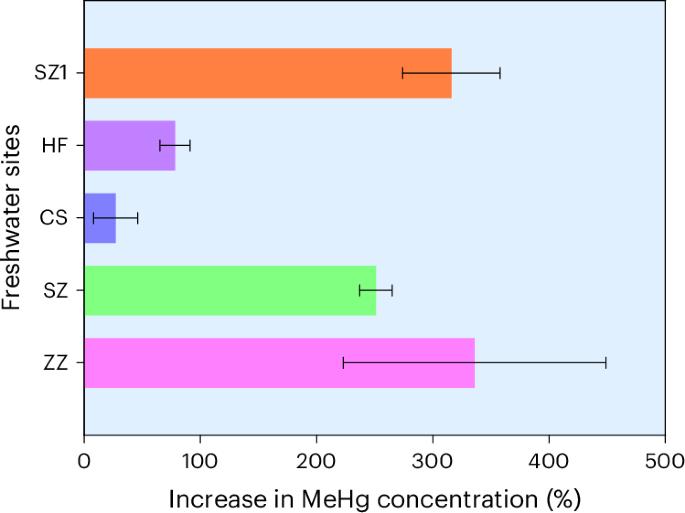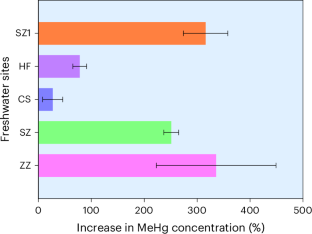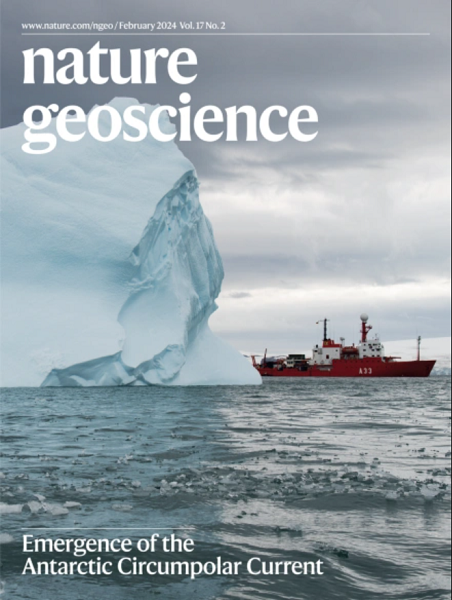Methylmercury formation in water triggered by light-independent plastic weathering
IF 16.1
1区 地球科学
Q1 GEOSCIENCES, MULTIDISCIPLINARY
引用次数: 0
Abstract
Plastic debris has recently been identified as a hotspot for abiotic metal transformations, triggered primarily by photo-weathering under sunlight. Here we perform a set of experiments with freshwater in the field and laboratory to explore metal transformations under dark conditions. We demonstrate that light-independent weathering of plastics leads to methylation of inorganic mercury (Hg(II)) in waterbodies. We propose that methylation occurs via an abiotic pathway involving three chain reaction steps, namely the release of plastic-derived dissolved organic matter (P-DOM), complexation of P-DOM with Hg(II) and intramolecular transfer of methyl groups. P-DOM is released during the light-independent oxidation of plastics via reactive oxygen species. Density functional theory simulations confirm the thermodynamic feasibility of the intramolecular transfer of methyl groups to Hg(II), upon its complexation with oxygen-containing groups in P-DOM. Model estimates demonstrate that polypropylene in freshwater produces methylmercury via this abiotic pathway with Hg(II) methylation potentials from 2.8 × 10−5% per day to 5.5 × 10−2% per day in China and 4.0 × 10−6% per day to 7.5 × 10−3% per day in other regions of the world. Plastic debris is therefore a hidden driver of abiotic methylmercury formation in dark waters. Our study uncovers a pathway through which the ongoing plastic pollution alters mercury cycling, posing a burgeoning threat to planetary health. Abiotic methylation triggered by plastic debris can occur independently of light conditions and therefore drive methylmercury formation in dark waters, according to an experimental study combined with density functional theory calculations.


水中甲基汞的形成是由不依赖光的塑性风化引起的
塑料碎片最近被确定为非生物金属转化的热点,主要由阳光下的光风化引发。在这里,我们在野外和实验室用淡水进行了一系列实验,以探索黑暗条件下金属的转化。我们证明了塑料的不依赖于光的风化导致水体中无机汞(Hg(II))的甲基化。我们认为甲基化是通过非生物途径发生的,包括三个链式反应步骤,即塑料衍生的溶解有机物(P-DOM)的释放,P-DOM与汞(II)的络合以及甲基的分子内转移。P-DOM通过活性氧在塑料的不依赖光的氧化过程中释放出来。密度泛函理论模拟证实了甲基在P-DOM中与含氧基团络合后向Hg(II)分子内转移的热力学可行性。模型估计表明,淡水中的聚丙烯通过这种非生物途径产生甲基汞,在中国,汞(II)甲基化电位从每天2.8 × 10 - 5%到5.5 × 10 - 2%,在世界其他地区,甲基化电位从每天4.0 × 10 - 6%到每天7.5 × 10 - 3%。因此,塑料碎片是黑暗水域中非生物甲基汞形成的隐藏驱动因素。我们的研究揭示了持续的塑料污染改变汞循环的途径,对地球健康构成了日益严重的威胁。
本文章由计算机程序翻译,如有差异,请以英文原文为准。
求助全文
约1分钟内获得全文
求助全文
来源期刊

Nature Geoscience
地学-地球科学综合
CiteScore
26.70
自引率
1.60%
发文量
187
审稿时长
3.3 months
期刊介绍:
Nature Geoscience is a monthly interdisciplinary journal that gathers top-tier research spanning Earth Sciences and related fields.
The journal covers all geoscience disciplines, including fieldwork, modeling, and theoretical studies.
Topics include atmospheric science, biogeochemistry, climate science, geobiology, geochemistry, geoinformatics, remote sensing, geology, geomagnetism, paleomagnetism, geomorphology, geophysics, glaciology, hydrology, limnology, mineralogy, oceanography, paleontology, paleoclimatology, paleoceanography, petrology, planetary science, seismology, space physics, tectonics, and volcanology.
Nature Geoscience upholds its commitment to publishing significant, high-quality Earth Sciences research through fair, rapid, and rigorous peer review, overseen by a team of full-time professional editors.
 求助内容:
求助内容: 应助结果提醒方式:
应助结果提醒方式:


